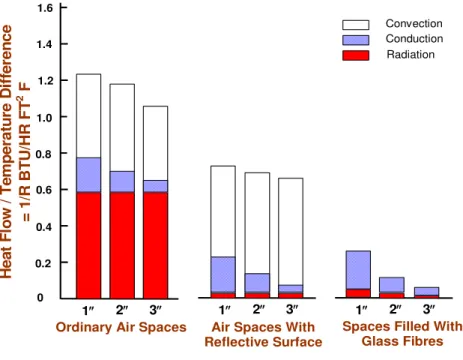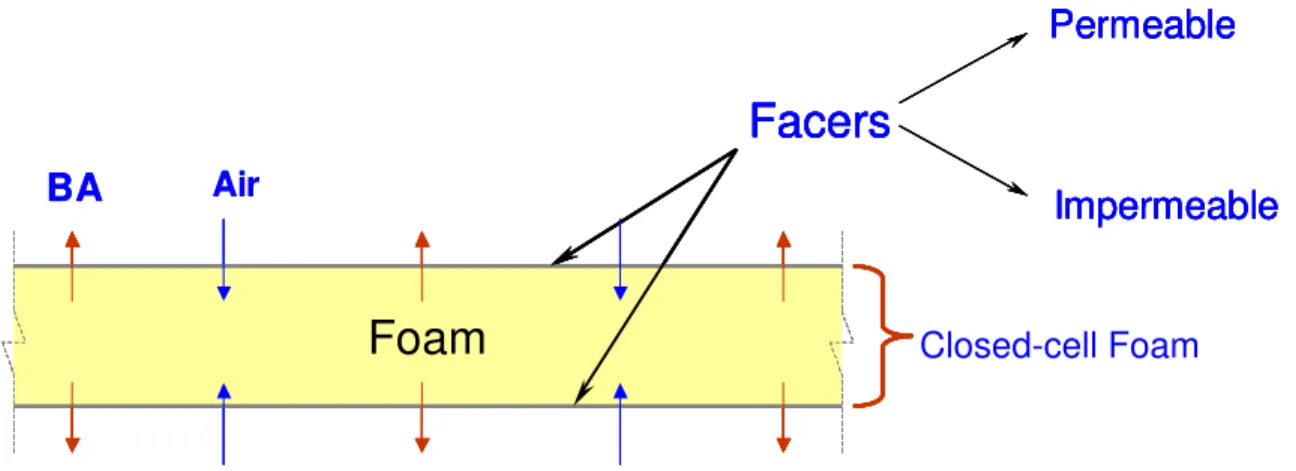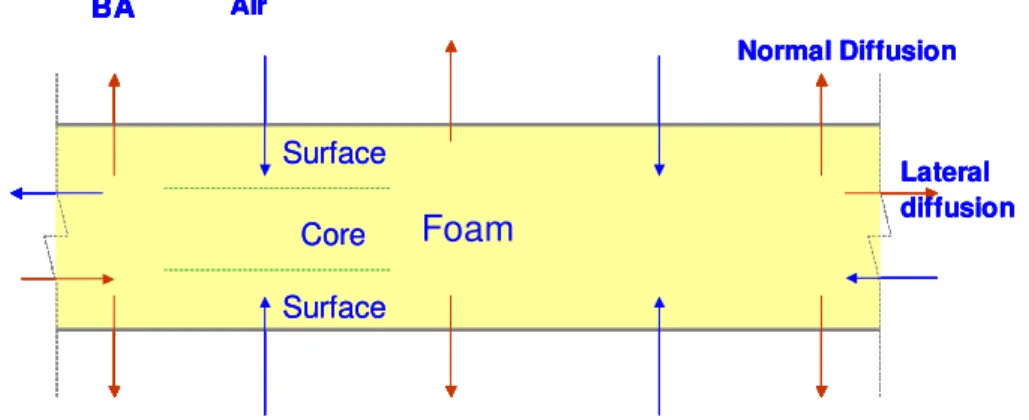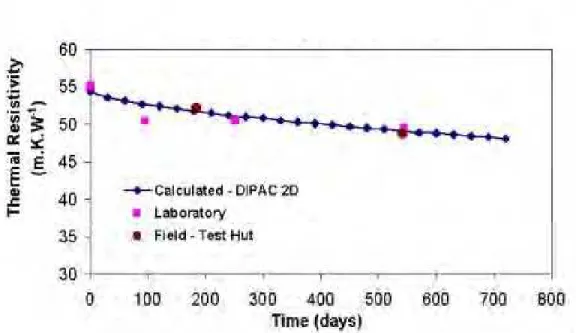Publisher’s version / Version de l'éditeur:
Vous avez des questions? Nous pouvons vous aider. Pour communiquer directement avec un auteur, consultez la
première page de la revue dans laquelle son article a été publié afin de trouver ses coordonnées. Si vous n’arrivez pas à les repérer, communiquez avec nous à PublicationsArchive-ArchivesPublications@nrc-cnrc.gc.ca.
Questions? Contact the NRC Publications Archive team at
PublicationsArchive-ArchivesPublications@nrc-cnrc.gc.ca. If you wish to email the authors directly, please see the first page of the publication for their contact information.
https://publications-cnrc.canada.ca/fra/droits
L’accès à ce site Web et l’utilisation de son contenu sont assujettis aux conditions présentées dans le site LISEZ CES CONDITIONS ATTENTIVEMENT AVANT D’UTILISER CE SITE WEB.
Third Global Insulation Conference and Exhibition [Proceedings], pp. 1-12, 2008-10-16
READ THESE TERMS AND CONDITIONS CAREFULLY BEFORE USING THIS WEBSITE. https://nrc-publications.canada.ca/eng/copyright
NRC Publications Archive Record / Notice des Archives des publications du CNRC :
https://nrc-publications.canada.ca/eng/view/object/?id=bb37cb09-c583-4742-a9b6-c257ab341c87 https://publications-cnrc.canada.ca/fra/voir/objet/?id=bb37cb09-c583-4742-a9b6-c257ab341c87
Archives des publications du CNRC
This publication could be one of several versions: author’s original, accepted manuscript or the publisher’s version. / La version de cette publication peut être l’une des suivantes : la version prépublication de l’auteur, la version acceptée du manuscrit ou la version de l’éditeur.
Access and use of this website and the material on it are subject to the Terms and Conditions set forth at
Long-term thermal resistance of closed-cell foam insulation: research update from Canada
L o n g - t e r m t h e r m a l r e s i s t a n c e o f c l o s e d - c e l l f o a m i n s u l a t i o n : r e s e a r c h u p d a t e f r o m C a n a d a
N R C C - 5 0 8 3 9
M u k h o p a d h y a y a , P . ; K u m a r a n , M . K .
2 0 0 8 - 1 1 - 1 8
A version of this document is published in / Une version de ce document se trouve dans:
3rd Global Insulation Conference and Exhibition, Oct. 16-17, 2008, Barcelona, Spain, pp. 1-12
The material in this document is covered by the provisions of the Copyright Act, by Canadian laws, policies, regulations and international agreements. Such provisions serve to identify the information source and, in specific instances, to prohibit reproduction of materials without written permission. For more information visit http://laws.justice.gc.ca/en/showtdm/cs/C-42
Les renseignements dans ce document sont protégés par la Loi sur le droit d'auteur, par les lois, les politiques et les règlements du Canada et des accords internationaux. Ces dispositions permettent d'identifier la source de l'information et, dans certains cas, d'interdire la copie de documents sans permission écrite. Pour obtenir de plus amples renseignements : http://lois.justice.gc.ca/fr/showtdm/cs/C-42
Long-Term Thermal Resistance of Closed-Cell Foam
Insulation: Research Update from Canada
Authors – Phalguni Mukhopadhyaya1 & M. Kumar Kumaran2
Affiliation - Institute for Research in Construction, National Research Council Canada
Abstract
The thermal insulating efficiency of closed-cell foam insulation with a captive blowing agent changes over time during its service life in building envelope construction. Hence, the long-term thermal resistance (LTTR) value of closed-cell foam insulation has a great significance to the building envelope designers. Researchers at the National Research Council Canada – Institute for Research in Construction (NRC-IRC) have worked on various aspects of aging characteristics of closed-cell foam insulation during the past two decades. This paper will provide a comprehensive scientific outline of the research activities that have been carried out at the NRC-IRC on the aging of closed-cell foam insulation and its practical implications on the North American construction industry.
Introduction
Existence of life on our planet is very much dependent on insulation. The layer of air that encompasses our planet is essentially an effective insulation blanket (Pelanne, 1978) keeping our planet inhabitable for us. In a more day-to-day life our interaction with insulating materials and systems is a recurring theme (thermos flask, clothing, fur, window glass, building envelope etc.). Hence, the need to search for better and/or cost effective insulation materials/systems, and develop better understanding of its thermal behavior cannot be overemphasized (Mukhopadhyaya et al. 2008).
The use of thermal insulation in various residential, commercial and industrial applications to save energy is a common practice in the developed as well as in the
1
Associate Research Officer, Institute for Research in Construction, NRC Canada, Ottawa, Ontario, Canada. (Corresponding Author, E-mail: phalguni.mukhopadhyaya@nrc-cnrc.gc.ca).
2
Principal Research Officer, Institute for Research in Construction, NRC Canada, Ottawa, Ontario, Canada.
developing world. Quite naturally, a higher thermal resistance (R-value) of insulating material is very much a desirable characteristic. Apart from instant energy savings it can also help to render better long-term durability of materials and systems, more effective moisture management, enhanced indoor comfort and improved fire protection. However, the overall insulation benefit of these materials is dependent on their long-term thermal resistance (LTTR) or aging characteristics (Kumaran et al. 1989; Bomberg and Kumaran, 1991; Kalinger and Drouin, 2001; Mukhopadhyaya et al. 2004). In order to understand the general behavior and LTTR of closed-cell foam insulation it is helpful to review the basic physics of heat transfer as outlined below.
Basic Physics of Heat Transfer
There are three basic heat transfer mechanisms that control the insulating capacity of conventional thermal insulation materials and these mechanisms (Figure 1) are: (1) Conduction, (2) Convection, and (3) Radiation.
Conduction occurs when constituent particles of the insulating material are in physical contact and energy is transferred through this contact.
Convective heat transfer happens as a result of energy transfer by moving constituent particles (i.e. gas or fluid) of the insulating material.
Radiation takes place due to the emission of electromagnetic waves that transfer energy from the hot emitting object to a cold receiving surface and unlike conduction or convection this mode of heat transfer can take place when there is no contact medium (i.e. vacuum) between two objects.
Figure 1 - Basic physics of heat transfer
(a) Conduction – Heat Transfer Through Particle Contact.
(b) Convection – Heat Transfer in a Flowing Medium.
(c) Radiation – Heat Transfer Due to Emission of Electromagnetic Waves.
Performance of Thermal Insulation
The most basic form of thermal insulation that had been used for the construction of the built environment is the ‘air space’ between two layers of construction. With a better understanding of heat transfer mechanisms and the advent of advanced manufacturing technology, the development of high performance insulation has been relatively slow but steady in terms of the increased R-value of the thermal insulation.
However, even now, enormous potential still exists to develop high performance thermal insulating materials and systems for the built environment construction and the fundamentals of this development lie within the basics of heat transfer mechanisms through the air space. As shown in Figure 2 (Shirtliffe, 1972), heat flow through typical air space is primarily due to convection and radiation. However, the introduction of reflective surface in the airspace can reduce the radiation component of the heat flow to a minimum level. Furthermore the addition of some fibrous materials that restricts the airflow inside the air space can transform the convective heat flow phenomenon almost negligible.
Hence, in any conventional insulation material, the three major components of heat flow are: (1) air conduction, (2) radiation and (3) solid conduction (Figure 3). The solid conduction and radiation components are functionally related to the bulk density of the insulation materials. However, for practical purposes the air conduction is treated as an independent component and offers a significant opportunity to develop high-performance insulation materials by effectively reducing this component and this is the basic principle that leads to the development of closed-cell foam insulation.
1″ 2″ 3″ 1″ 2″ 3″ 1″ 2″ 3″ Convection Conduction Radiation 0 0.2 0.6 0.8 1.0 1.2 1.4 0.4 1.6 He at Fl ow / Tem p e ra tur e Di ff er e n c e = 1 /R BT U /HR FT 2 F
Ordinary Air Spaces Air Spaces With Reflective Surface
Spaces Filled With Glass Fibres
Figure 2 - Heat transfer across air spaces
0.03 0.02 0.01 20 40 60 80 100 The rm a l C o n duc ti v it y ( W /m .K ) Density (kg/m3) 0.00 0 AIR CONDUCTION RADIATION SOLID CONDUCTION 1 2 3
What is Closed-Cell Foam Insulation?
The basic structure of closed-cell foam insulation consists of two major components (1) polymer matrix, and (2) gas-filled closed cell (Figure 4). The captive gaseous blowing agent(s) fills up the closed-cells, surrounded by polymer matrix, during the manufacturing process of the foam. The thermal conductivity of blowing agent is usually lower than air. In effect, the presence of blowing agents inside the closed-cell reduces the air conduction component of thermal conductivity significantly depending on the type of blowing agent used in the closed-cell foam insulation, as shown in Table 1 (Wu and Eury, 2002). The thermal conductivity of most of the commonly used blowing agents is lower than half of the thermal conductivity of air.
Table 1 – Thermal conductivity of blowing agents
Blowing Agent Thermal Conductivity [kgas @ 25 (°C) mW/m.K]
Blowing Agent Thermal Conductivity [kgas @ 25 (°C) mW/m.K] CFC-11 8.7 Hydrocarbon n-C5 15 HCFC-141b 9.7 HFC-134a 13.6 HCFC-142b 11.5 HFC-245fa 12.2 HCFC-22 11.0 HFC-365mfc 10.6 Hydrocarbon c-C5 12.0 Air 26 In general closed-cell foam insulation has many desirable properties as insulation and a construction material such as:
1. High r-value per unit thickness 2. Fire resistance
3. Moisture resistance and water repelling characteristics 4. Dimensional stability
5. Efficient filler for cavities, and
6. Resistance to solvents commonly found in construction adhesives.
However, it is also true that the thermal conductivity of the closed-cell foam insulation, due to the presence of captive blowing agents inside the closed-cell, increases over time as air diffuses into and blowing agent(s) diffuses out of the closed-cells (Figure 5). The rate at which this diffusion (also called aging) occurs depends on a number of parameters such as properties of foam matrix, geometry and structure of the cells, exposure
conditions, density of material, manufacturing process, thickness of the insulation, chemical composition and permeability of the surfaces etc. This aging process of the foam insulation is very rapid just after the manufacturing and slows down with the time and almost reaches to an equilibrium state after a certain time. Hence, for the thermal design purposes, unlike traditional fibrous insulation materials, the long-term thermal resistance (LTTR) value is to be considered as the effective thermal resistance of the closed-cell foam insulation. The researchers at the National Research Council (NRC) Canada, Institute for Research in Construction (IRC) have been researching on the various aspects of the LTTR characteristics of the closed-cell foam insulation for more than 20 years now. A brief summary of these research activities and the technical challenges are presented in the following paragraphs.
Solid Polymer Matrix
Closed Cell (Blowing Agent)
Solid Polymer Matrix
Closed Cell (Blowing Agent)
Figure 4 – Basic structure of closed-cell foam insulation
Foam
Facers
Polyiso Foam Board Permeable
Impermeable
BA Air
Foam
Facers
Polyiso Foam Board Permeable
Impermeable
Foam
Facers
Polyiso Foam Board Permeable
Impermeable
Foam
Facers
Polyiso Foam Board
Foam
Foam
Facers
Polyiso Foam Board Permeable
Impermeable
BA Air
Closed-cell Foam
Research on Closed-cell Foam Insulation at NRC-IRC: A Success Story
In the late 1980s a very timely action by the NRC-IRC helped the plastic foam insulation industry deal with a technical crisis stemming from environmental concerns.
Up until that time, closed-cell foams, such as polyurethane foam, polyisocyanurate foam and phenolic foam used chlorofluorocarbons (CFCs) as a captive blowing agent to impart excellent thermal resistance for insulation applications in buildings, exceeding that provided by traditional insulating materials such as glass and mineral fibre. Non-toxic, non-flammable and non-corrosive, CFCs were thought to be stable gases and were considered ideal blowing agents. The foam industry thus maintained a strong share of the multi-billion dollar North American insulation market.
This rosy financial picture faded abruptly with the discovery that CFCs escaping into the atmosphere pose a long-term danger to the environment. Free radicals resulting from the occasional breakdown of the compounds eat away the ozone layer. When the extent of the problem became apparent, an international agreement known as the Montreal Protocol was signed by 24 nations in 1987 to restrict the use of CFCs in manufacturing technologies. In Canada this included a ban on the use of CFCs in foam insulation. With very little time to respond, the foam industry was in desperate need of a solution to enable it to hold onto its market advantage. That solution would be found in a research project between the Society of Plastic Industries (SPI) and NRC-IRC.
The project began in 1988 and immediately it became evident that there was more to this work than simply replacing blowing agent A with blowing agent B. It was more a case of a radical change in technology because so many aspects of the foam cellular morphology had to be changed to obtain comparable thermal performance of foams using blowing agents with probably lower thermal effectiveness. The research challenge was to develop accelerated techniques to evaluate new materials and link them to the development of new foam products. An even greater challenge was to develop a methodology that substantiated the long-term performance of viable products, using data from short-term laboratory experiments and field-testing.
To build on the incremental knowledge that was acquired over 20 years and to set the linkage between the material and the test methodology development, the researchers first developed a generic and homogeneous foam product. Called Base 88, it represented the
industrial technology of sprayed polyurethane foams that existed in 1988. This generic product was manufactured by three industry participants in the project. Improved control of application variables generated in a sub-project permitted Base 88 to become highly reproducible and suitable for drawing the "baseline" to compare any innovation. Hydro-chloro-fluorocarbon (HCFC)-based blowing agents, such as HCFC-123, HCFC-141b, combinations of HCFCs with and without water, all alternatives to CFC-11, were then introduced. A new generation of alternative foam products resulted. A satellite project between one of the partners and NRC-IRC focused on identifying desirable properties of new blowing agents. Principles and measurement methods from classical thermodynamics, heat and mass transport, equations of state and even biology found their way into the research activities. The research team delivered solutions to the Canadian foam industry well within the time limit imposed by the Montreal Protocol. At that time the industry was globally ahead of any other competition.
Following on the heels of the successful project, the researchers at NRC-IRC, jointly with the cellular plastic industry, developed a new Canadian National Standard called
CAN/ULC-S770 to "measure" the long-term performance of any innovative foam product. What is more, working with researchers from the Oak Ridge National Laboratory in the U.S., NRC-IRC researchers introduced various aspects of their research findings into the corresponding ASTM (American Society for Testing and Materials) International Standard (ASTM C1303) for polyurethane, polyisocyanurate, extruded polystyrene and sprayed polyurethane foam products. This has furthered North American innovation and helped produce the modern generation of cellular plastic insulation materials. The innovation continues and interestingly enough innovations also bring new challenges as outlined in the following paragraphs.
Today’s Challenges
Though there is a standard test method now to determine the LTTR of closed-cell foam insulation based on the scaling relationship (equation [1]) there are also many challenges today arising primarily from variations in constituent materials, manufacturing processes, product thickness etc.
[1] 2 2 1 2 1 ⎟⎟ ⎠ ⎞ ⎜⎜ ⎝ ⎛ = L L t t
Where,
t1 & t2: Two different times, and
L1 & L2: Two different slice thickness.
A significant amount of closed-cell foam insulation products are made with or without facers in the form of a rigid board. Facers can be permeable or impermeable (Figure 5). It has been experimentally established that presence of permeable facer on both surfaces does not have any measurable effect on the LTTR value of closed-cell foam insulation. However, the introduction of impermeable facers on the surface is aimed at enhancing the LTTR properties of the closed-cell foam insulation.
Research Significance and Objectives
The current research at the NRC-IRC focuses on the development of a comprehensive test procedure that can be used to predict the LTTR of closed-cell foam insulation products with impermeable facers.
More specifically, there are two major tasks involved in this project: 1. Laboratory and field tests on specimens, and
2. Analysis of the test observations/data with a numerical modeling tool (DIPAC-2D) (Bomberg and Kumaran, 1995).
It is envisaged that by combining the output from the above two tasks, a methodology could be developed that can be applied to estimate the LTTR characteristics of closed-cell foam insulation boards with impermeable facers.
Research Findings To Date
In general this research project established the fact that aging process of impermeably faced closed-cell foam insulation boards can be explained with the concept of combined lateral and normal diffusion processes (Figure 6).
BA Air Foam Lateral diffusion Surface Surface Core Normal Diffusion BA Air Foam BA Air Foam BA Air Foam BA Air Foam Foam Foam Foam Foam Lateral diffusion Surface Surface Core Normal Diffusion Lateral diffusion Surface Surface Core Normal Diffusion
Figure 6 – Diffusion processes in closed-cell foam insulation
More specifically the following observations could be made from analyses of the results obtained from the numerical model (DIPAC-2D) and examining experimental and field test data.
Firstly, while the laboratory measurements, field observations and numerical calculations appear to agree well (Figure 7), there is an inconsistency with the lateral diffusion coefficient. The lateral diffusion coefficient determined for different specimens (i.e. full thickness and thin slices with facer) are significantly different. It is an important issue that needs further research.
Secondly, a considerable amount of aging occurred in thin slice specimens despite having untouched impermeable facers, as well as a glass plate at the bottom of the specimens and edges sealed completely with epoxy coating. This may be due to imperfections of the gas barrier system.
Further investigation on these issues would be imperative for the future progress towards the development of a methodology to predict the LTTR of closed-cell foam insulation board with impermeable facer.
Figure 7 – Comparison of numerical, laboratory and field study results
Acknowledgements
The authors would like to acknowledge the financial supports provided by numerous stakeholders of the North American Thermal Insulation industry over a period of more than 20 years to carryout the research on the long-term thermal performance of closed-cell foam insulation. The technical contributions made by Dr. Mark T. Bomberg in this endeavour were of great importance.
References
1. ASTM C1303 (2007) “Standard test method for predicting long-term thermal resistance of closed-cell foam insulation”, ASTM International, West Conshohocken, PA, USA.
2. Bomberg, M.T. and Kumaran M.K. (1991) “Evaluation of long-term thermal performance of cellular plastics revisited”, ASTM Special Technical Publication, 1116, Symposium on Insulation Materials: Testing and Applications (Gatlinburg, TN, USA, October 10, 1991), Philadelphia, PA: The American Society for Testing and Materials, pp. 123-141. (ISBN: 0803114206), (NRCC-35950) (IRC-P-3197 ASTM-STP-1116).
3. Bomberg, M. and Kumaran, M. K. (1995) “Use of the distributed parameter continuum (DIPAC) model for estimating the long-term thermal performance of insulating foams”, Thermal Performance of the Exterior Envelopes of Buildings VI, Clearwater Beach, FL, pp. 15-24.
4. CAN/ULC-S770 (2003) “Standard test method for determination of long-term thermal resistance of closed-cell thermal insulating foams”, Underwriters' Laboratories of Canada, 7 Underwriters Road, Toronto, Ontario M1R 3B4, Canada. 5. Kalinger, P. and Drouin, M. (2001) “Closed cell foam insulation - Resolving the issue
of thermal performance,” Commercial/Industrial Roofing Systems, October/November 2001, Trade Magazine Article, Johns Manville, USA (http://www.jm.com).
6. Kumaran, M.K., Bomberg, M.T., Marchand, R.G., Ascough, M.R. and Creazzo J.A. (1989) “A method for evaluating the effect of blowing agent condensation on sprayed polyurethane foams”, Journal of Thermal Insulation, 13 (October): 123-137. (Also published in CFCs and the Polyurethane Industry: Vol 2: (A Compilation of Technical Publications, 1988-1989)), (NRCC-35473) (IRC-P-3106).
7. Mukhopadhyaya, P., Kumaran K., Normandin, N., van Reenen, D. and Lackey, J., (2008) “High performance vacuum insulation panel: Development of alternative core materials”, ASCE Journal of Cold Regions Engineering, Vol. 22, No. 4 (in press). 8. Mukhopadhyaya, P., Bomberg, M.T., Kumaran, M.K., Drouin, M., Lackey, J.C., van
Reenen, D. and Normandin, N. (2004) “Long-term thermal resistance of polyisocyanurate foam insulation with gas barrier”, IX International Conference on Performance of Exterior Envelopes of Whole Buildings, Clearwater Beach, Florida, December, 2004, pp. 1-10. (NRCC-46881). <http://irc.nrc-cnrc.gc.ca/pubs/fulltext/nrcc46881/>.
9. Pelanne, C. M. (1978) “Thermal insulation: what it is and how it works”, Journal of Thermal Insulation, Volume 1, April 1978, pp. 223-236.
10. Shirtliffe C.J. (1972) “Thermal resistance of building insulation.” CBD-149, Institute for Research in Construction, National Research Council, Ottawa, Canada.
11. Wu, J. and Eury, S. (2002) “HCFC and HFC alternative blowing agents.” PU China, April 2002. © Arkema Inc.




